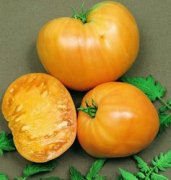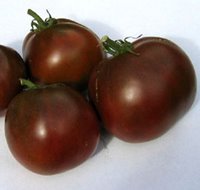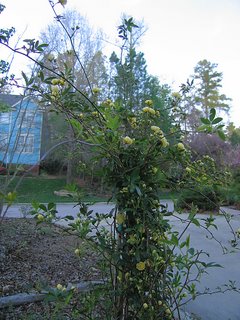It's quite warm in the 80s again. The backyard seems to fill out even more each day, and my azaleas are almost in full bloom. The kerria japonica is starting to fade.
Many of my roses have buds, and my second bush, after Mothersday, has open blossoms, the David Austin shrub rose Mayflower! I planted the stevia and Italian basil in my herb bed. I retracted the mulch mounds blanketing the individual rose bushes. The "red tip" photinia in the back has many clusters of white flowers, and the burning bush in the side has many small flowers.
My Fred Boutin lavender that I planted in spring 2003 is dead, but the neighboring two lavender bushes (Otto Quast is the variety), have even more blooms. I found a good description of Otto Quast on the website of a Washington state nursery, Maxwelton Valley Gardens:
This hardier variety of Spanish lavender is exceptional for its bold, purple-bracted flower spikes, blooming from early spring until a hard freeze. In a good year, it may flower in nearly every month (ours is still blooming on January first, after a week and a half of light frosts). It also has more attractive foliage in winter than most common lavender varieties. The fragrance is a little softer than other lavenders, but is still entirely deeply scented enough to be satisfying.
Cutting off the spent flowerheads a few times a year will encourage stronger rebloom and will tidy the plants, but isn't absolutely necessary. 'Otto Quast' will remain more compact if it is cut back a little after flushes of bloom, otherwise, it can spread to be three or more feet wide. Like most plants which bloom nearly all the time, and like many other lavenders, plants of this variety will need to be replaced every three or four years, as they seem to exhaust themselves otherwise. Cuttings from your present plants will provide you with abundant replacements, or you can purchase new plants, if you prefer.
It is very drought tolerant, thrives in full sun and light soils, and has no pests. It's great in the poor soils, harsh winds, and salt spray at the seaside, as well as inland. It attracts birds, butterflies, and human beings.
I guess my bush took a few years to become so prolific and attractive. That description sounds like my Otto Quast is a winner!









